

|
Posts Tagged ‘weight loss’
Tuesday, September 11th, 2012

One more post on weight loss (or gain), mitochondria density, and metabolic health and then I’ll get back to posting some healthy, gluten-free recipes. I promise. But before I do that, I have to fill in the blanks from my prior post on this subject. To catch up, please see part one—the mitochondria: your own starship enterprise. This two-part series features highlights from last June’s Fitness & Health Bloggers Conference held at the newly opened Anschutz Health & Wellness Center.
Okay, are you ready for a different take on weight loss? Curious, even?
Dr. Iñigo San Millán is the director of the Human Performance Lab at the Anschutz Center. He’s an exercise physiologist and his conference presentation brought together two different areas of customized approaches to fitness. On one end, we have the average person trying to lose weight and get healthy. On the other end, we have world-class, elite, endurance athletes. You know—the kind of people who run ultra-marathons, break world records, win Olympic medals, ride in the Tour de France. Yes, I know, there’s a big gap between average and elite. But according to Dr. San Millán, we have a lot to learn from elite athletes and can apply the same general principles of metabolic health to our own pursuit of fitness.
What is metabolic health, you ask? Overall, it means being healthy and fit in all aspects and on a whole body level (on a cardiovascular, hormonal, emotional, nutritional, and cellular level). Sounds rather yogic, doesn’t it? Mind, body, and spirit health.
Dr. San Millán tossed out some brutal facts about the rising rates of obesity, diabetes, cancer, and cardiovascular disease in the United States. Sixty-eight to seventy percent of the US population is overweight or obese. Two-thirds of Americans are on some sort of diet or weight-loss program at any given time, but 98% of weight loss is gained back. That roller-coaster ride of weight gain, weight loss, weight gain undermines metabolic health and makes it increasingly harder to lose the weight. What’s the answer?
It’s complicated and there’s no magic formula, but there’s a positive side to this. We can make health-enhancing changes at anytime of life. It’s never too late to eat better and move more. BUT, it has to become a way of life, not a temporary “diet” or periodic exercise program.
According to Dr. San Millán, elite endurance athletes are the most fit people on the planet and the only population totally free of acquired metabolic and cardiovascular disease. As Dr. San Millán said in his talk, “Simply, it doesn’t exist.”
So, what makes these elite athletes metabolic super-stars?
High mitochondrial density and metabolic flexibility.
Huh?
In a nutshell: cellular energy requirements control how many mitochondria we have (in “healthy” individuals without a genetic mitochondrial disorder). The more we move (walk, run, hike, bike, ski, play tennis), the more mitochondria we have. Endurance athletes have twice the mitochondrial content as sedentary individuals (Davis et al., 1981, 1982). The more mitochondria we have, the more efficiently we process carbs and fat. The more efficiently we process carbs and fat, the less likely we are to be overweight. If we maintain a healthy weight, there is less risk of insulin resistance, diabetes, and heart disease.
See those legs in the above cycling photo? That’s turbo-charged mitochondrial density in action. It’s unlikely any of those cyclists are overweight or have type 2 diabetes or heart disease. Tour de France riders consume an average of 6000–9000 calories per day. Of those, 75–80% are carbs. Michael Phelps told ESPN that he consumes 8000–10000 calories per day during training and competition. Again, a high percentage are carbs.
Okay, sounds good, but where do we start? And comparing ourselves to elite athletes is a little intimidating, wouldn’t you agree? I don’t know about you, but I’m not going to be running marathons anytime soon. Plus, we’re all different. Each body is unique. We have different adaptations to exercise and different responses to what we eat. But, the good news is, it doesn’t matter how old we are or what shape we’re in, we can make positive changes. We can lose weight. We can eat better. We can become healthier. We can increase our mitochondria and enhance our ability to process carbs and fat. We can thrive.
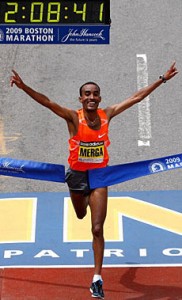 
Here’s the deal. According to Dr. San Millán, physical activity should be the foundation, boosted by a healthy diet. And that healthy diet can include carbs. Healthy carbs aren’t evil, we just need to move our bodies daily to be efficient at processing those carbs.
I agree. We need to make time for activity, at least an hour a day, more if possible. You don’t have to go to the gym or buy expensive equipment. Dance, do yoga, garden, walk your dog, sell your car, move to Paris, become Amish. It’s about permanent lifestyle changes; it’s not about dieting. We need to move more to lose weight, maintain metabolic health, and avoid type 2 diabetes and heart disease.

We don’t have to be an elite athlete, but we can learn from them.
Peace, love, and physical activity! Lots of it. Weight loss will be the side effect!
Melissa
Friday, August 17th, 2012

Wait!
Don’t leave.
This is good information, especially if you want to lose weight, maintain a healthy weight, avoid type 2 diabetes (maybe even reverse it), boost your energy, and generally enhance your health and vitality.
Seriously, if nothing else, who doesn’t want more energy?
This will be a 2-part blog post. I have too much information to share with you in one shot. Last June I attended the Fitness & Health Blogger’s Conference at the new (and amazing) Anschutz Health & Wellness Center on the University of Colorado’s Medical School campus here in Denver. The conference, put on by the awesome folks at Zephyr Adventures, included everything from world-class speakers and organic food to optional exercise classes in a state-of-the-art fitness center. We were also treated to a tour of the metabolic kitchen and dinner on the urban garden green roof. For someone with a background in exercise science and nutrition, this was my kind of conference. Plus, we got to wear workout clothes the whole time. It makes it much easier to squirm around and sit cross-legged in a lecture hall if you’re barefoot and wearing yoga pants.
Dr. James Hill is the founder and Executive Director of the Health and Wellness Center. He’s also the co-founder of the National Weight Control Registry and America on the Move, a national weight-gain prevention initiative. He kicked off the conference with a presentation on The Importance of Evidence Based Approaches to Health and Wellness. The audience, mostly fitness bloggers, loved him. He’s a leading expert on obesity, food policy, environmental changes, genetic influences on energy balance, the health consequences of inactivity, and on and on and on. The guy is brilliant and has a great sense of humor. Perfect combo!
One of Dr. Hill’s slides was a map of US obesity rates. In 2008 Colorado “weighed” in as the fittest state with an obesity prevalence of 15%-19%. A few days ago, new numbers were announced. In one article, Colorado was called the “skinniest” state with a new rate of 20.7%. I’m proud of Colorado (born and raised here), but calling us the skinniest state with an obesity rate of almost 21% is misleading. Our obesity rate has doubled since 1995. Dr. Hill suggested that Colorado is simply the caboose on a fast moving train going the wrong direction. We’re still the fittest state, but we’re gaining just like everyone else. The highest obesity rates in general are in adults over age 40, ranging from 36% to 42%. That’s a big segment of the population.
What do you think? Which is more important in causing weight gain—diet or inactivity?
Dr. Hill asked the audience that question and the responses were all over the place. It’s a complex issue and he encouraged lively debate. That’s the mark of a good teacher!
Our genes haven’t changed since the 50s and 60s, but our environment has. Our lifestyles are different. We don’t move as much as our parents and grandparents did and we don’t eat the same food they ate. Obesity is the adaptation to this new environment. Our ancestors ate whenever food was available and rested whenever they could. It was a biological necessity. Now, abundant, cheap, and poor-quality food is available at every turn and we don’t even have to get off our bums to prepare it, let alone find or catch it. We can pick up the phone (now conveniently unattached from the wall) and order it to be delivered. If we’re out and about, all we have to do is pull through a drive-up window and have someone toss a bag of food to us.
We have to motivate ourselves to move. Now it’s called exercise. It used to be the way we lived.
How many motivational sayings do you see posted on Facebook or Twitter each day? I’m “guilty” of that. I post upbeat, motivational ramblings on a regular basis. We sit on our bums in front of our computers and tell each other to get out and do something. It’s actually rather silly when you think about it.
As many of you know, I spent the past year co-writing a book with friend, colleague, and endurance athlete Pete Bronski of the blog No Gluten, No Problem. I sat at my computer for long hours, fretted over my writing, stressed about hitting deadlines, and didn’t move as much as I normally do. I’m in that over 40 (way over 40 in my case) category and I gained several pounds. Under 10, but over 6—I’m actually not sure how much weight I gained, but regardless of the amount, “contents did shift” and I don’t like the feeling. It’s easier to gain weight when we’re older because our body composition changes. We typically have less metabolically active muscle tissue because we don’t move as much. I’m on a mission to change that. I started last March. Check metabolism, weight loss, yoga & flexible genes for the back-story.
If you diet alone to lose weight, your metabolic rate will go down. That’s not good. Dr. Hill noted that one of the characteristics of people who were successful in losing weight and keeping it off was 60-90 minutes of exercise per day. And if you’re considerably overweight to begin with, you’ll have to work harder to lose the weight because of the metabolic difference between lean muscle and fat. It’s not easy and my heart goes out to people who have this challenge. Just losing my few pounds has been difficult. I can only imagine how overwhelming it would be to have 50, 60, or 100 pounds to lose. But it can be done. It takes lots of time (years maybe); an overall strategy of simple, small changes; a scale (horrors!); patience; good food; and lots of movement. LOTS of movement.
The point is to increase mitochondrial density, which will increase the ability to efficiently process fat. Although the biochemical process is complicated, the point is pretty straightforward. Increase muscle, decrease fat.
I’ll leave you with a definition of the mitochondria and we’ll launch into part 2 next week—Pursuing Metabolic Health: What we have Learned from Elite Endurance Athletes with Dr. Iñigo San Millán. Dr. San Millán is the director of the Exercise Physiology and Human Performance Lab at the Anschutz Health and Wellness Center and did a stellar presentation on the importance of movement, mitochondrial density, and fat loss. If you stick with me for part 2, you’ll see that there is always hope. We can make positive changes at any age and the mitochondria is our Starship Enterprise!
Mitochondria
A double-membraned organelle that plays a central role in the production of ATP (energy-carrying molecule); known as the powerhouse of the cell. Mitochondria are small, spherical, rod-shaped, or filamentous structures that appear throughout the cytoplasm (material within a cell, excluding the nucleus). Mitochondria are self-replicative. Yay! They replicate in response to the increased cellular need for energy. Exercise causes an increase in mitochondria, which is a GOOD thing. We need to do that to lose weight and keep it off. FOREVER.
More on that in part 2.
Note: For more information on obesity statistics and recipe rehab, check the Anschutz Health and Wellness Center’s Tools & Resources link. If you’re in the Denver area, check their Programs & Services. And if you’re interested in gluten-free living and thriving, check our new book, The Gluten-Free Edge: A Nutrition and Training Guide for Peak Athletic Performance and an Active Gluten-Free Life.
Peace, love, and mitochondrial density!
Melissa
Saturday, March 3rd, 2012

Warning: science post, no recipe, bail out now unless you have a curious personality. You know the type. Always asking questions, perpetually wondering, head-in-the-clouds explorer. I’ll post a follow-up recipe to my healthy breakfast series next week, but for now, I’m on a mission.
I’ve gained several pounds over the past few weeks and I did it quite easily, which surprised me. Check here to see why I gained the weight. I’m determined to lose it before it becomes my new normal, but I’ve also been curious as to why I gained it so easily. My eating habits didn’t change that much. My exercise routine was slightly different, but I kept up with my yoga practice.
Are you still with me?
Let’s start at the beginning. Literally.
I love this video from Virginia Hughes at The Last Word On Nothing because it’s short, charming, and incredibly creative. If you want a better understanding of your irregularly arranged DNA and how your unique version of this dynamic, coiled jumble of genes makes you the special (or quirky) person you are, watch this short (less than 2 minutes) video.
(Please scroll down, this isn’t the end of the blog post. Click the start button on the video to watch the magic of DNA coiling. The rest of my rambling continues after the video.)
See? Wasn’t that awesome?
In a nutshell (or nucleus in this case): DNA forms the inherited genetic material found inside our cells. Genes are the hereditary units that form our DNA. Our genes tell our cells how to function and what traits to express.
And guess what? We have some control over that. A good example is the genetic predisposition for celiac disease. Say you have the gene that codes for celiac disease (DQ2 or DQ8), but you live on some isolated island and you’re never exposed to gluten. That gene would not be expressed. It would stay turned off. On the other hand, if you eat a lot of gluten and the stars align, you’ll end up hitting the switch and turning the gene on. I have DQ2 genes and celiac disease, but I’ve been living gluten-free for so long now, I feel like my celiac gene is on dim mode. It’s not turned on, but it’s also not totally turned off either. Eating a big plate of gluten-filled pasta would be the equivalent of hitting the on switch and re-expressing the gene. I don’t want to do that.
On another note, I have this theory that I’ve tweaked a different genetic predisposition of mine in a healthy way and although that’s a good thing, there have been some unintended consequences. We have about 20,000 genes so there’s lots of potential for shenanigans.
Let me explain. That’s if you’re still here.
My mom says I was born running (much to her dismay). I grew up in the 50s and 60s and had they coined the term at that time, I probably would have been called ADD-ish. I rarely sat down long enough to eat a full meal, never took naps, was always fidgeting, ran up and down stairs, twirled, jumped off things, climbed over furniture and so on. If you ask my mom, she’ll say I was a royal pain in the neck.
Jump ahead to the year 2000. I’m hitting midlife, am still very active, but I’ve never really learned to relax. High blood pressure is common in my family and mine had been inching up over the years. Not bad, but it was making a move. I decided I had no desire to express (turn on) that high blood pressure gene that seems so prevalent on my dad’s side of the family. I decided to turn it off by practicing yoga and meditation. And guess what? A decade later, I don’t have high blood pressure, I’m calmer, I don’t fidget as much, and I no longer drive people crazy with my speed walking. Instead, I float around chanting in Sanskrit. No worries. Peace, love, and tie dyes.
One more time, but now jump ahead to 2011. I’m busy co-writing a book* with my friend and colleague Pete Bronski of No Gluten-No Problem, so I sit at my computer for long hours each day. I don’t change my eating habits (which are good for the most part), but my intense hiking, skiing, dog walking, etc. go by the wayside. I’m still committed to yoga, but to keep from being too stressed from my work, I practice a more restorative style. Yikes, I gain 5 or 6 pounds in short order. I’ve never done that before.
Here’s how it happened. I’m in midlife (okay, late midlife, late-late midlife) and I’m now practicing a more calming style of yoga. Both my age and my yoga have contributed to a reduction in my metabolism. That’s the point of yoga—relaxation, lower heart-rate, deeper breathing, lower blood pressure, less caloric need, and hence a lower metabolic rate.
Yikes! The perfect storm. I’m mellow, I don’t fidget, I’m older, I do restorative yoga, and I’m working long hours sitting at my computer. The result is weight gain, even though I’m eating well. And because of my age (which will remain untyped) and the fact that I’ve intentionally shifted my metabolism down a notch with all the yoga, it’s been harder to lose the weight. My muscle to fat ratio has changed. I don’t want these extra pounds to become my new set point, so what can I do?
First off, I can’t get all worked up about it as I have that high blood pressure gene just waiting for an excuse to turn on. I’m continuing with my meditative yoga, but I’m making sure I get a couple of power yoga classes in per week. I’ve added mountain biking into my schedule to boost my metabolism and burn some calories and I’ve added some round-about weight training. I’m not into going to the gym and lifting weights, but I’m aware that I need to build muscle, which is more metabolically active than fat. I do my yoga in the morning, my biking whenever I can, and I’m periodically doing some at-home strength training.
One last thing. I don’t think it’s a big deal to gain a few pounds. I have motivations other than being the “right” weight. I want to do some climbing this summer and I need to be in good shape for that. Extra weight makes climbing 14,000 foot peaks more difficult. Yoga inversions and arm balances are harder on my body if I weigh more. A few pounds makes a difference in the activities that are important to me. If you want to lose weight, you have to evaluate what your genetic predispositions might be, what you eat (quality and quantity), and what you do (sit, stand, run, what type of yoga, etc.) and adjust according to your age and lifestyle factors. Life is definitely an ever-evolving journey.
I promise a breakfast recipe for next week. A nutrient-dense, low calorie one.
Peace, love, and flexible genes!
Melissa
* When I wrote this blog post last March our book had not been released. The Gluten-Free Edge: A Nutrition and Training Guide for Peak Athletic Performance and an Active Gluten-Free Life is now available on Amazon.com and at various bookstores. Yeah!
Thursday, January 7th, 2010
It’s the new year and more than just a few of us have made resolutions to eat better, lose weight and exercise more. I’m definitely on a mission to lose a few pounds and reset my metabolism after the holidays. I even blogged about it on New Year’s Day. Staying on track with healthy eating can be a bit of a roller coaster ride. For me, sugar is the fuel that causes the thrills and spills.
As a nutritionist, I’m always curious as what makes people overeat. Or, what motivates me to eat that last little sliver of cheesecake when I’m cleaning up after a party – even though I’m absolutely stuffed. Why do we even let ourselves get to the point that we’re absolutely stuffed? If we’re full, why do we pack down one more cookie or the last few bites of the cheeseburger? Or, in my case, two more pancakes floating in maple syrup.
Why do we do that to ourselves?
It’s complicated.
In 1960, women ages 20 to 29 averaged about 128 pounds. By 2000, the average weight of women in that age group had reached 157. For women aged 40 to 49, the average weight had gone from 140 pounds in 1960 to 169 pounds in 2000. *
I wonder what those numbers are a decade later, in 2010?
Two out of three American adults are overweight or obese. We’ve all heard the health risks that accompany being overweight. So, why do we keep shoveling the food in?
This is a test. I had a recipe ready to post today, but the focus at the beginning of the year is always the same and it got me thinking. Why do we do this over and over each year?
According to the research, there are certain food combinations that trigger overeating and understanding why isn’t easy. I can’t really tell you why I ate the last of the cheesecake while cleaning up the kitchen (and fought my daughter for it). I was full, I certainly didn’t need it. There’s no good reason, except that I like cheesecake and in some odd way, I find it satisfying. At least while I’m eating it, but then immediately afterwards, I feel like poo and kick myself in the bum for overeating.
Bazillions of dollars are spent on dieting each year; people lose a few pounds, regain it, and then start the process all over again the next January 1st. Why? Back when I was growing up (the fifties and sixties), most people weren’t overweight. Weight was fairly stable. What’s different now?
I’ll expand on this in a later post, but for now, I’d appreciate it if you’d take a survey. Please choose which food you crave most from the choices below and leave your answer in the comment section. I’ll post the results in a few days. Be honest, there’s no right or wrong. Which one looks the most tempting?
1. Bacon cheeseburger with all the trimmings
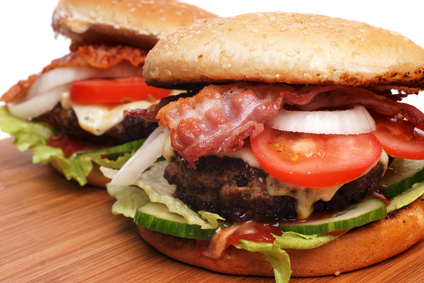
2. Brownie ice cream sundae with whipped cream
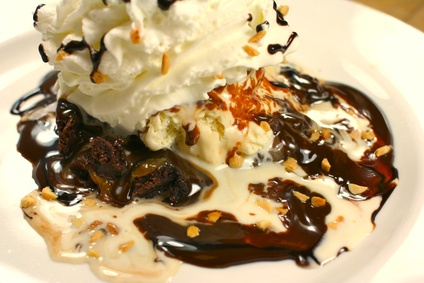
3. Raw, fresh broccoli

4. Kraft macaroni and cheese
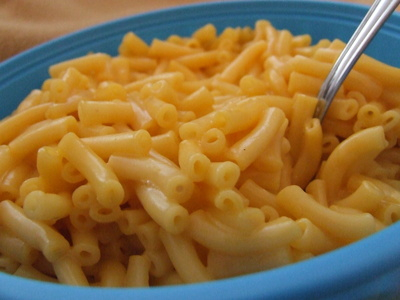
5. Pancakes with butter and pure maple syrup

6. Chocolate cake with chocolate icing
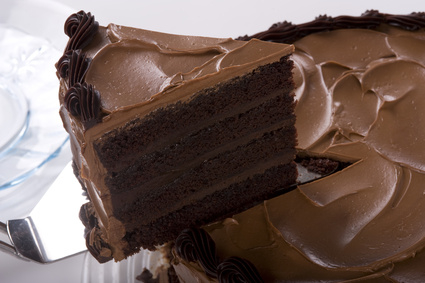
Okay, guys – let me know which one of these choices sets your heart on fire? Are you drooling yet? Which lever would you keep pounding?
I’ve already scarfed up the pancakes, if you’re wondering.
Melissa
* Weight data from The End of Overeating, Dr. David Kessler (Nutrition Action Healthletter)
Disclaimer: All material on this website is provided for informational and educational use only and
should not be used for diagnostic purposes. Consult with your physician regarding any health or medical concerns you may have.
|
Warning: getimagesize(/oats.jpg): failed to open stream: No such file or directory in /nfs/c02/h01/mnt/28285/domains/glutenfreeforgood.com/html/blog/wp-content/themes/GlutenFreeForGood_2.0/functions.php on line 47
Warning: imagecreatefromjpeg(/oats.jpg): failed to open stream: No such file or directory in /nfs/c02/h01/mnt/28285/domains/glutenfreeforgood.com/html/blog/wp-content/themes/GlutenFreeForGood_2.0/functions.php on line 63
Warning: imagecopyresampled() expects parameter 2 to be resource, bool given in /nfs/c02/h01/mnt/28285/domains/glutenfreeforgood.com/html/blog/wp-content/themes/GlutenFreeForGood_2.0/functions.php on line 64
Warning: imagejpeg(/tn_oats.jpg): failed to open stream: Read-only file system in /nfs/c02/h01/mnt/28285/domains/glutenfreeforgood.com/html/blog/wp-content/themes/GlutenFreeForGood_2.0/functions.php on line 65
Warning: getimagesize(/Gluten-Free-101-jacket-266x300.jpg): failed to open stream: No such file or directory in /nfs/c02/h01/mnt/28285/domains/glutenfreeforgood.com/html/blog/wp-content/themes/GlutenFreeForGood_2.0/functions.php on line 47
Warning: imagecreatefromjpeg(/Gluten-Free-101-jacket-266x300.jpg): failed to open stream: No such file or directory in /nfs/c02/h01/mnt/28285/domains/glutenfreeforgood.com/html/blog/wp-content/themes/GlutenFreeForGood_2.0/functions.php on line 63
Warning: imagecopyresampled() expects parameter 2 to be resource, bool given in /nfs/c02/h01/mnt/28285/domains/glutenfreeforgood.com/html/blog/wp-content/themes/GlutenFreeForGood_2.0/functions.php on line 64
Warning: imagejpeg(/tn_Gluten-Free-101-jacket-266x300.jpg): failed to open stream: Read-only file system in /nfs/c02/h01/mnt/28285/domains/glutenfreeforgood.com/html/blog/wp-content/themes/GlutenFreeForGood_2.0/functions.php on line 65
Warning: getimagesize(/SoupVeggies-1024x831.jpeg): failed to open stream: No such file or directory in /nfs/c02/h01/mnt/28285/domains/glutenfreeforgood.com/html/blog/wp-content/themes/GlutenFreeForGood_2.0/functions.php on line 47
Warning: imagecreatefromjpeg(/SoupVeggies-1024x831.jpeg): failed to open stream: No such file or directory in /nfs/c02/h01/mnt/28285/domains/glutenfreeforgood.com/html/blog/wp-content/themes/GlutenFreeForGood_2.0/functions.php on line 63
Warning: imagecopyresampled() expects parameter 2 to be resource, bool given in /nfs/c02/h01/mnt/28285/domains/glutenfreeforgood.com/html/blog/wp-content/themes/GlutenFreeForGood_2.0/functions.php on line 64
Warning: imagejpeg(/tn_SoupVeggies-1024x831.jpeg): failed to open stream: Read-only file system in /nfs/c02/h01/mnt/28285/domains/glutenfreeforgood.com/html/blog/wp-content/themes/GlutenFreeForGood_2.0/functions.php on line 65
Warning: getimagesize(/IMG_3182.jpg): failed to open stream: No such file or directory in /nfs/c02/h01/mnt/28285/domains/glutenfreeforgood.com/html/blog/wp-content/themes/GlutenFreeForGood_2.0/functions.php on line 47
Warning: imagecreatefromjpeg(/IMG_3182.jpg): failed to open stream: No such file or directory in /nfs/c02/h01/mnt/28285/domains/glutenfreeforgood.com/html/blog/wp-content/themes/GlutenFreeForGood_2.0/functions.php on line 63
Warning: imagecopyresampled() expects parameter 2 to be resource, bool given in /nfs/c02/h01/mnt/28285/domains/glutenfreeforgood.com/html/blog/wp-content/themes/GlutenFreeForGood_2.0/functions.php on line 64
Warning: imagejpeg(/tn_IMG_3182.jpg): failed to open stream: Read-only file system in /nfs/c02/h01/mnt/28285/domains/glutenfreeforgood.com/html/blog/wp-content/themes/GlutenFreeForGood_2.0/functions.php on line 65
Warning: getimagesize(/IMG_3432.jpg): failed to open stream: No such file or directory in /nfs/c02/h01/mnt/28285/domains/glutenfreeforgood.com/html/blog/wp-content/themes/GlutenFreeForGood_2.0/functions.php on line 47
Warning: imagecreatefromjpeg(/IMG_3432.jpg): failed to open stream: No such file or directory in /nfs/c02/h01/mnt/28285/domains/glutenfreeforgood.com/html/blog/wp-content/themes/GlutenFreeForGood_2.0/functions.php on line 63
Warning: imagecopyresampled() expects parameter 2 to be resource, bool given in /nfs/c02/h01/mnt/28285/domains/glutenfreeforgood.com/html/blog/wp-content/themes/GlutenFreeForGood_2.0/functions.php on line 64
Warning: imagejpeg(/tn_IMG_3432.jpg): failed to open stream: Read-only file system in /nfs/c02/h01/mnt/28285/domains/glutenfreeforgood.com/html/blog/wp-content/themes/GlutenFreeForGood_2.0/functions.php on line 65
|

























